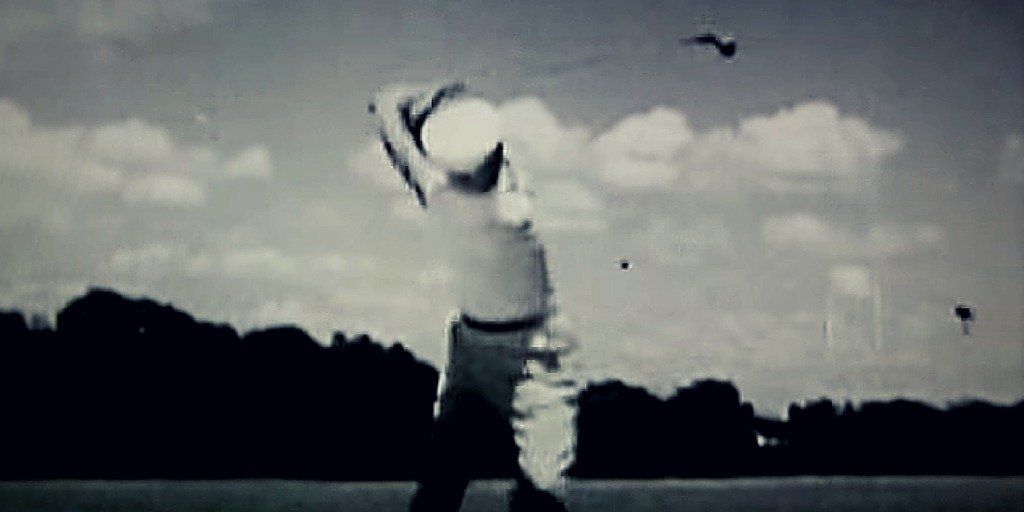
There is no right way to swing a golf club. Every golfer is unique, and I’ve always believed that each swing is like a fingerprint. That being said, there are certain fundamentals that can be met in order to make it easier to hit more golf shots in the direction you are aimed. Golf swing transition is one of those topics.
One part of the golf swing that I’ve seen many players struggle with (including myself) is their transition. The small amount of time that separates your backswing from your downswing can be crucial in determining the success of your shot.
A common flaw I’ve noticed is that many recreational golfers will have a tremendous difference in the rhythm of their backswing versus their downswing. If I had to take a stab at it, most players generally have very slow backswings, and then once they get to the transition things get hurried and they just can’t wait to get their club to the ball.
It’s similar to a roller coaster. You get this slow buildup as you reach the top, and then once you pass the highest point all hell breaks loose and you are speeding towards the bottom with reckless abandon.

Something is going wrong in the transition. It’s not smooth, it’s not balanced, and it’s certainly not consistent.
“I Got Quick”
Many people just refer to this as getting quick. It’s one of the defacto swing phrases often muttered at municipal golf courses.
While this phrase is certainly overused, I do believe there is more than a bit of truth to the idea that a golfer getting too quick at their transition can throw off the sequence of their swing, resulting in many positional errors that prevent them from success at impact.
There are always exceptions to any rule, especially when it comes to golf swings, but having a smooth, balanced swing certainly makes it easier to be a successful golfer.
It doesn’t guarantee success because there are plenty of golfers out there who can shoot great scores with wild looking swings. However, if you’re looking to improve I don’t think you can go wrong trying to improve these core issues.
What is the Right Golf Swing Transition?
Let’s get back to the idea of golf swing transition. If you watch many professional golfers you’ll notice that they have beautiful timing in their swing, and some of them will have a brief pause at the top. Some players’ pauses are extremely quick, and others seem to take forever, but it’s there.
Byron Nelson was one of the best examples of the distinct pause in the golf swing. Take a look, it’s a thing of beauty. You can see the club floating for a very brief moment.
If you go out to any golf course over the weekend you will notice that the swings have what I would describe as a “violent” transition.
Many players don’t even finish their backswing, which can be the result of nerves and a desire to smash the ball.
As stated earlier, there are always exceptions, but I believe you’ll have a much harder time hitting consistently good golf shots with a swing that has inconsistent timing.
While I can’t guarantee improvement for everyone, if you introduce a slight pause, it just might help those of you reading this that are struggling at the top of your swing.
Some Experimentation
The pause can feel like the fraction of a second when you reach the top of a swing at the playground. It’s like taking a bucket full of water and trying to swing it back and forth without letting any spill out.
Things are balanced, timed well, and in sync. I like all of those feelings in a golf swing transition.
If you feel that you are someone who struggles with these issues, an easy drill you can try on the range is simply to exaggerate a pause. You can start with short shots with your wedges and work your way up to a full swing.
Start to feel like you aren’t rushing as much to get your club back to the ball. Let your backswing happen, and resist the urge to be on that roller coaster speeding towards the bottom.
Another Great Tool
I have struggled with the transition of my swing, and it’s mostly on tee shots because like you, I fall victim to wanting to kill the ball. It results in wildly inconsistent shots that make golf just a bit harder.
One tool that has been invaluable to constantly making me feel a smooth golf swing transition has been The Orange Whip. The second I began using it I started to feel the brief pause, and it quickly improved the quality of my driver swings (not to mention other clubs).
It’s very difficult to explain how to fix concepts like these, which is why drills and certain training aids can help golfers actually feel the fix. I don’t think you’ll find a better tool for getting that feel, and it’s why the best teachers and players in the world use this product.
To Pause or Not to Pause?
I can’t tell you if a distinct pause will fix your swing or not. And I certainly can’t tell you how long the pause should be, but to me it feels like the club is briefly floating in the air before I start my downswing. This is a topic that has been debated many times in the golf world, and of course you’ll have people taking both sides.
That’s why the practice range is a great place to experiment and try new things in your swing (rather than just doing the same thing over and over again).
Give the drill a shot, and certainly look into the Orange Whip for even more help.
This is a swing thought that has helped my game out tremendously, and some of the best golfers of all time have benefitted as well from it. It might be a nice addition to your game.
We care about the protection of your data Read our Privacy Policy